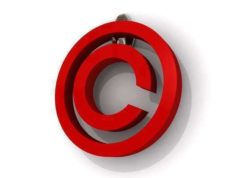
For works
that were published before March 1, 1989, a copyright notice was a required
component for all works of authorship. This proved that the copyrights for a
piece of work remained in the author’s ownership. After March 1, 1989, however,
the rules of copyrights were amended and the copyright notice is no longer
required, yet is highly recommended for placement on all works.
This is because
the copyright notice ensures that if a copyright infringement case comes up,
the defendant has no valid argument that he or she did not know a work was
copyrighted. The copyright notice passes the final judgment. If a work does not
contain it, the work will be still be protected, though it is much more
difficult to prove ownership rights.
Copyrighting Sound Recordings:
Depending on the form of medium in which the work
is derived, the copyright notice may require being conveyed through a certain
method to the public. Visually perceptible copies of
work simply require a typed copyright notice, complete with the encircled
“C”, name of the author, and year of publication. Audio recordings,
with no definitive visuals, have different requirements.
A sound recording work is defined as an
arrangement of a series of musical, spoken or other sounds, but not including
the sounds accompanying a motion picture or other audiovisual work. When the
sound recording is copyrighted, they cannot be reproduced or distributed
without the consent of the author.
To enforce this with a copyright notice, the
notice is usually printed on the package of the audio recording. Most
recordings are in the form of records, tape cassettes or compact discs. The
copyright notice is printed on these mediums.
The sound recording copyright notice is similar to
visually perceptive mediums, though the copyright symbol is slightly different.
Instead of an encircled “C”, the copyright symbol has an encircled
“P”. Next, the year of first publication is printed, followed by the
owner of the copyrighted sound recording.
Example: (P) 2005 Nothing Records Inc.
This copyright notice should be expressed on the
record, cassette or compact disc itself, and should also be printed on the
package in which it is contained.

























